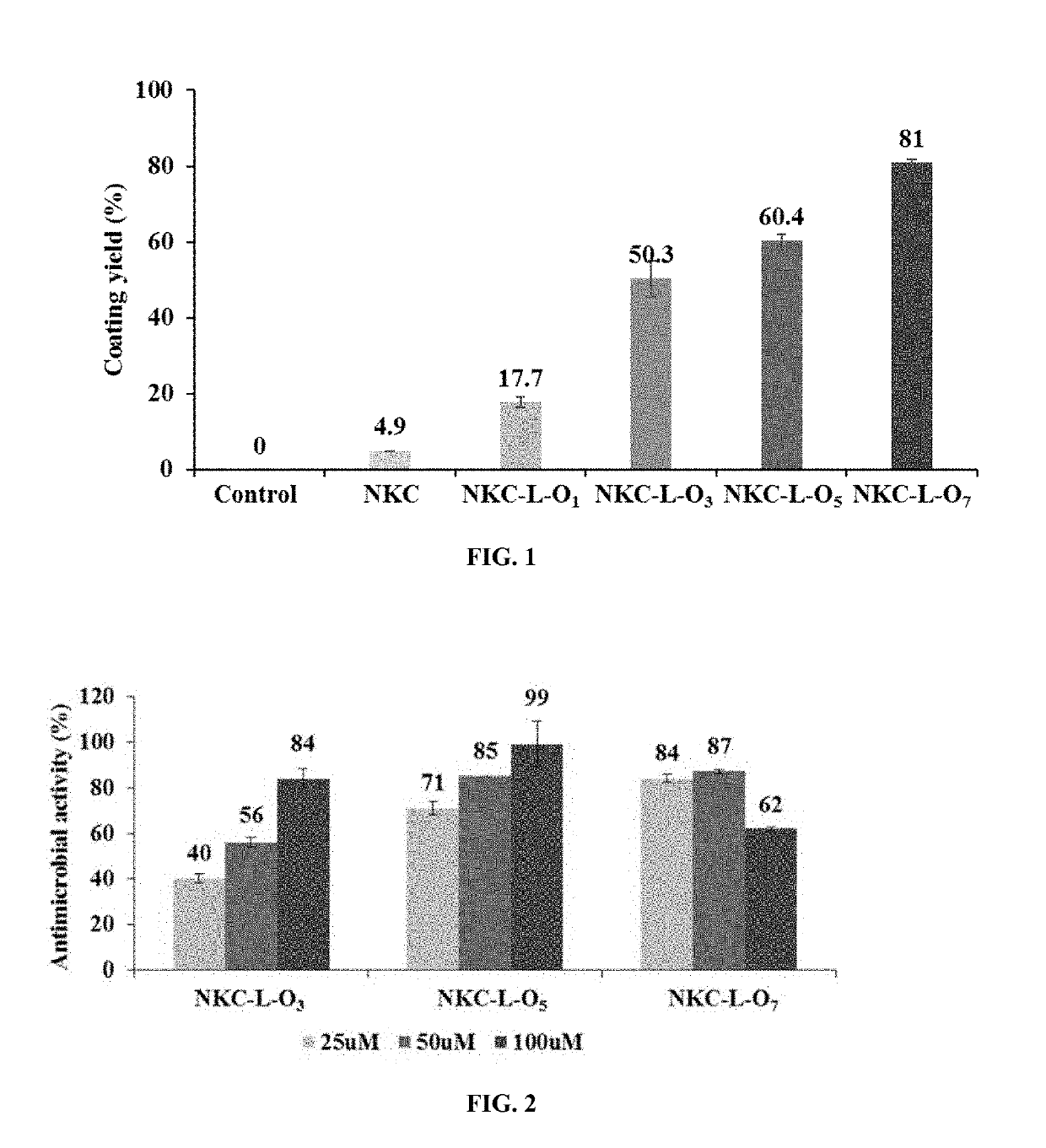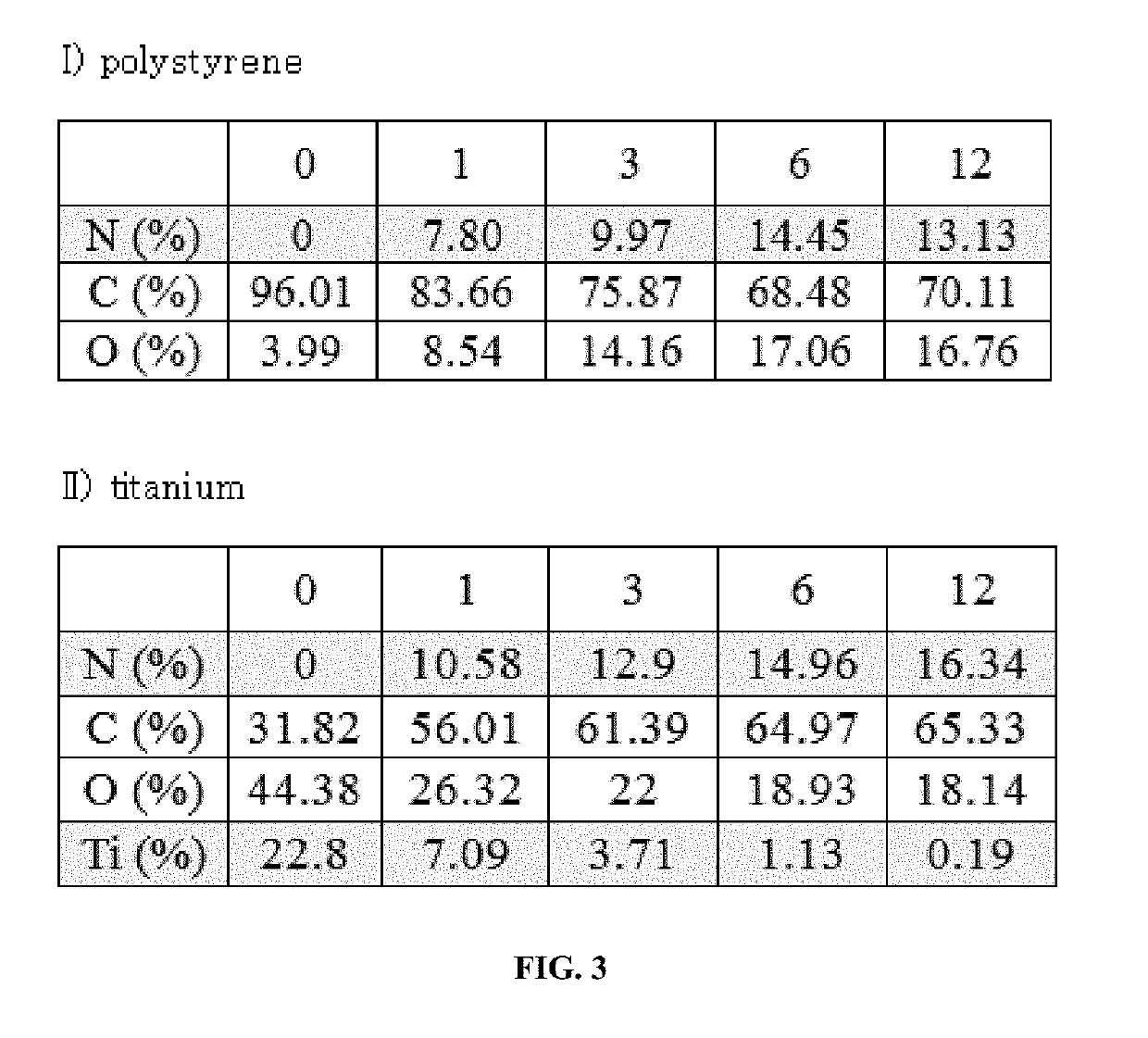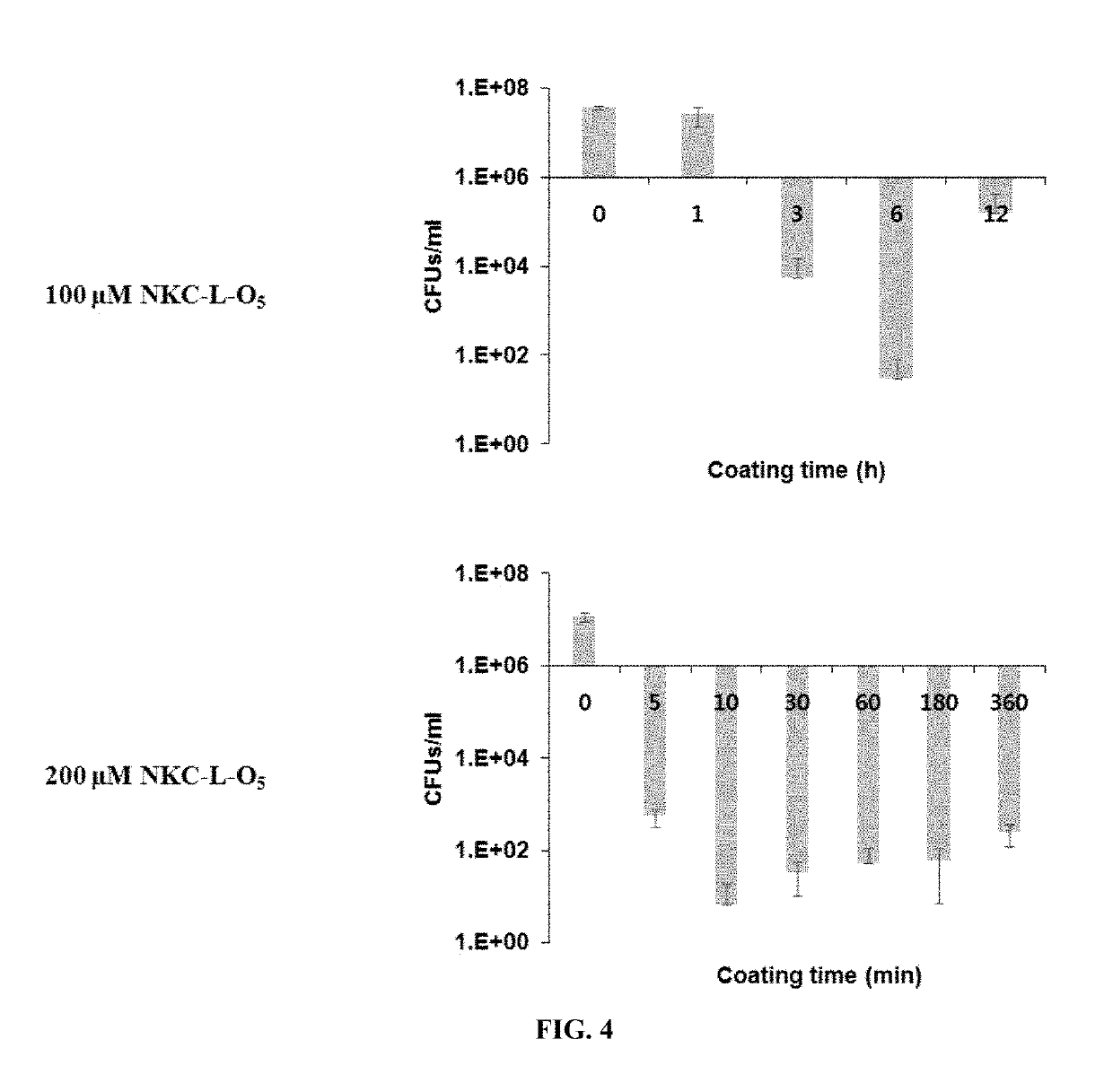Producing method of antimicrobial peptide with enhanced adhesion and uses thereof
- Summary
- Abstract
- Description
- Claims
- Application Information
AI Technical Summary
Benefits of technology
Problems solved by technology
Method used
Image
Examples
experimental example 1
e Antimicrobial Peptides
experimental example 1-1
Antimicrobial Peptides
[0056]In order to utilize NKC, which is a peptide exhibiting a strong antimicrobial activity against a wide range of microorganisms, as an antimicrobial coating agent, an adhesive property was imparted to antimicrobial peptides by conjugating 3,4-dihydroxyphenylalanine (DOPA), which is a non-natural amino acid known to play an important role in providing adhesion strength in mussel adhesive proteins, which are biocompatible and exhibit strong adhesion regardless of surfaces, to an end of the NKC. Herein, in order to determine the optimal number of DOPA, 1, 3, 5, or 7 DOPA moieties were conjugated to an end of the NKC, and then GGGGS, which is a flexible linking sequence, was added between NKC and the DOPA sequences to prevent the NKC and DOPA from affecting each other's activity. The amino acid sequence information of the conjugated NKC and DOPA is shown in Table 1 below.
TABLE 1MICNameAmino acid sequence*M. W.[μM]NKCAPKAMKLLKKLLKLQKKGI2148.8 1NKC-(G4S)2-APKAMKL...
experimental example 2
tionality of Coating Composition Using Adhesive Antimicrobial Peptides
Experimental Example 2-1: Identification of Coating Ability of Adhesive Antimicrobial Peptides According to Number of Conjugated DOPA Moieties
[0059]The level of adhesion according to the number of conjugated DOPA moieties is unknown. Therefore, in order to determine the optimal number of DOPA moieties, the peptides (100 μM) prepared in Example 1-1 were coated on a polystyrene surface for 12 hours, and then the amount of the attached peptides was identified. Specifically, the peptide solution (100 μM) was added to a polystyrene 24-well plate in an amount of 300 μL, and the mixture was coated in an incubator at 37° C. for 12 hours. After the coating, the solution in the wells was pipetted to determine its volume, and the concentration of the uncoated peptides was determined by a BCA assay. Finally, the amount of the peptides was calculated considering the volume of the solution after the coating. The calculated amou...
PUM
| Property | Measurement | Unit |
|---|---|---|
| Time | aaaaa | aaaaa |
| Molar density | aaaaa | aaaaa |
| Molar density | aaaaa | aaaaa |
Abstract
Description
Claims
Application Information
 Login to View More
Login to View More - R&D
- Intellectual Property
- Life Sciences
- Materials
- Tech Scout
- Unparalleled Data Quality
- Higher Quality Content
- 60% Fewer Hallucinations
Browse by: Latest US Patents, China's latest patents, Technical Efficacy Thesaurus, Application Domain, Technology Topic, Popular Technical Reports.
© 2025 PatSnap. All rights reserved.Legal|Privacy policy|Modern Slavery Act Transparency Statement|Sitemap|About US| Contact US: help@patsnap.com



